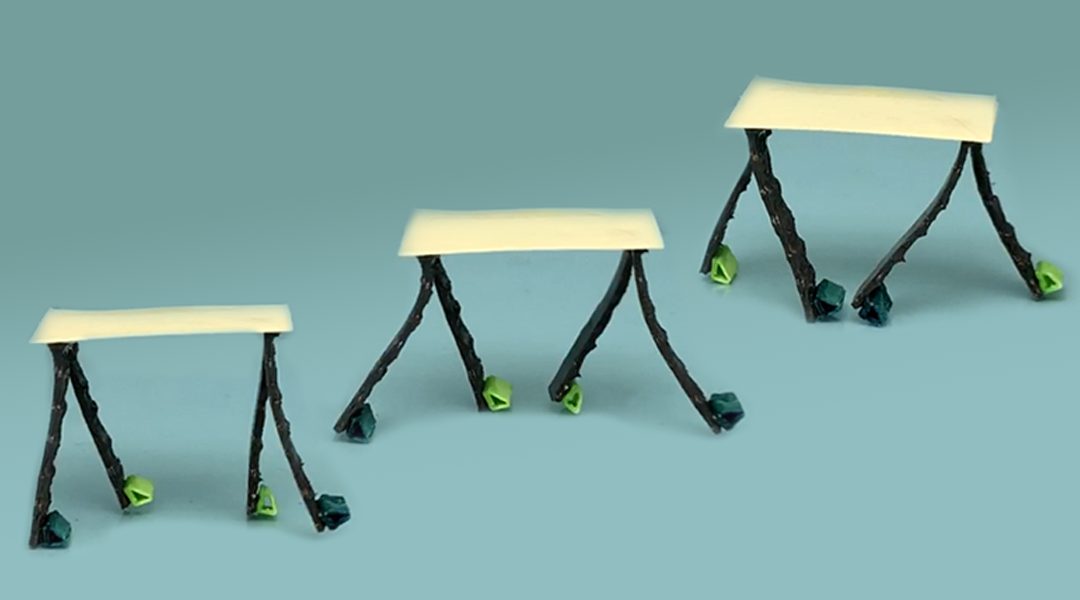Image credit: Shuai Wu, The Ohio State University
Recently, magnetically-responsive soft materials have shown tremendous application in soft robots and biomedical devices because of their advantages of untethered, fast, reversible, and programmable deformation.
The driving force for deformation under magnetic fields is derived from the embedded micrometer-sized magnetic particles that behave like small permanent magnets. The distribution of the magnetic polarity of these particles dictates the shape change and the motion of the material. However, how to design and program this distribution to achieve sophisticated shape changes and functions is a significant challenge. For example, a sidewinder snake can move at a high speed on both hard and granular surfaces by precisely controlling its dynamic and local shape change of its entire body. Inspired by nature, how to design a functional robot with distributed actuation and shape change?
Now a team of researchers from the Ohio State University and Georgia Institute of Technology has pushed the programmability and fabrication of magnetically-responsive soft materials to the next level by developing a machine learning guided design strategy with a new 3D printing method that can give voxel-level control of the magnetic polarity. This new strategy and the printing method allow the fabricated material to achieve predetermined shapes in a smart way.
“For magnetic materials, finding the distribution of the magnetic polarity to achieve a complex predetermined actuation shape is a major challenge, due to the huge number of possibilities of allocating the magnetic polarity”, said Professor Renee Zhao of Ohio State University. “In our new approach, we use an evolutionary algorithm and ask the computer to do the job automatically.”
The evolution algorithm is a popular approach in machine learning. It employs a strategy where after a large number of simulations is made, it searches for good designs and filters out bad designs iteratively and eventually finds a solution that matches the predetermined requirement.
Once the distribution of the magnetic polarity is determined, it should be encoded into the material. “Encoding the magnetic polarity into the material is another challenge because conventional 3D printing methods can only control the magnetic polarity in a large area with little variation”, said Professor Jerry Qi of Georgia Institute of Technology. To address this challenge, the team uses a 3D printer with a specially designed algorithm that can encode the magnetic polarity distribution into the material at the level of voxels, or 3D pixels, as active information. This greatly increases how well one can smartly expand the design space and control the shape actuation.
By using this approach, the team demonstrates complicated shape changes and motions for advanced applications such as biomimetic soft robots.
“We expect this design and fabrication strategy provides even larger material flexibility and enhances the application potential of magnetically-responsive soft materials, such as soft robots that can walk, or can move like a sidewinder. It also has the potential to be applied to other soft materials, such as those based on hydrogels, liquid crystal elastomers, for different application environments”, said Zhao.
Written by: Renee Zhao, Jerry Qi, and Shuai Wu
Reference: S. Wu, et al. ‘Evolutionary Algorithm‐Guided Voxel‐Encoding Printing of Functional Hard‐Magnetic Soft Active Materials.’ Advanced Intelligent Systems (2020). DOI: 10.1002/aisy.202000060

















